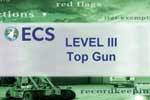Key Findings
The Middle East & Africa vetronics market is set to record a CAGR of 3.43% during the forecast period, 2022-2030. Algeria, Israel, Saudi Arabia, and Turkey are making heavy investments in procuring armored vehicles and tanks with the latest electronics like communication systems and electronic warfare. However, limited defense budgets in the developing nations of the region like Nicaragua, Jordan, and Algeria are restricting consistent investments for acquiring cutting-edge defensive electronics systems.
Market Insights
Morocco, Israel, Egypt, Saudi Arabia, Turkey, Algeria, Iran, and Rest of Middle East & Africa are assessed for the Middle East & Africa vetronics market growth evaluation. In Turkey, the market expansion is attributed to the business prospects of companies. For instance, FNSS, a Turkish defense company, supplies tracked armored combat vehicles and modernized M113 armored personnel carriers for the Royal Saudi Land Forces. Additionally, the corporation runs the Royal Saudi Land Forces’ Automotive and Upgrade Centre (AUC) in Al-Kharj and has been undertaking the M113 vehicle upgrade for almost fifteen years. Besides, the business delivers Armored Command Post Vehicles based on the FNSS ACV-19, thereby contributing to the growth of the market analyzed in Turkey.
Further, Israel is planning to spend more on buying hundreds of combat vehicles from Israel Aerospace Industries (IAI) for its Special Forces. Also, IAI’s ZD Negeva and Z-MAG cars are purchased by the Directorate of Production and Procurement. Such factors propel market growth in these countries.
Competitive Insights
Some of the eminent companies in the Middle East & Africa vetronics market include Leonardo SpA, Lockheed Martin, Northrop Grumman, General Dynamics Corporation, etc.
Our report offerings include:
- Explore key findings of the overall market
- Strategic breakdown of market dynamics (Drivers, Restraints, Opportunities, Challenges)
- Market forecasts for a minimum of 9 years, along with 3 years of historical data for all segments, sub-segments, and regions
- Market Segmentation caters to a thorough assessment of key segments with their market estimations
- Geographical Analysis: Assessments of the mentioned regions and country-level segments with their market share
- Key analytics: Porter’s Five Forces Analysis, Vendor Landscape, Opportunity Matrix, Key Buying Criteria, etc.
- Competitive landscape is the theoretical explanation of the key companies based on factors, market share, etc.
- Company profiling: A detailed company overview, product/services offered, SCOT analysis, and recent strategic developments




